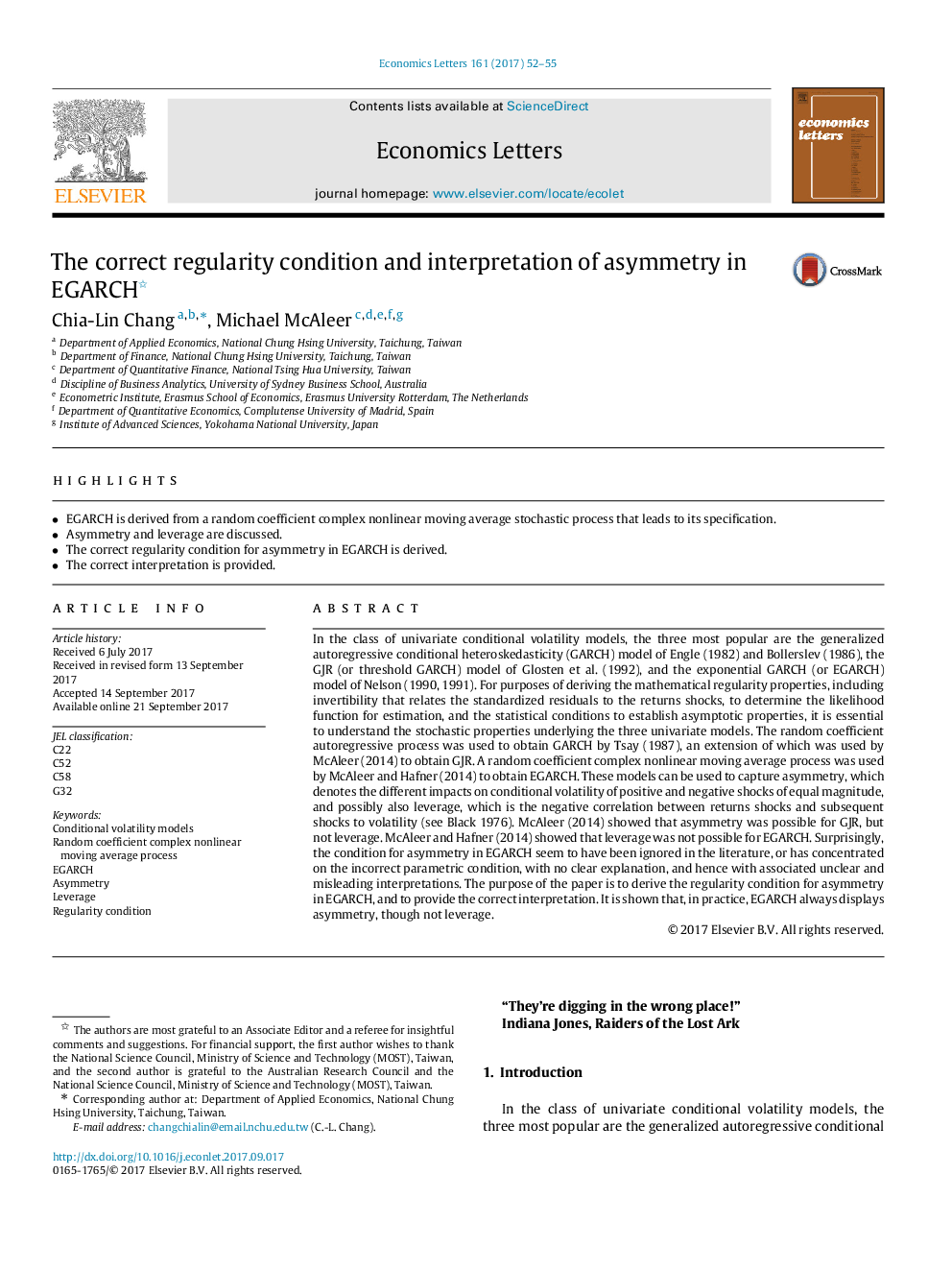| کد مقاله | کد نشریه | سال انتشار | مقاله انگلیسی | نسخه تمام متن |
|---|---|---|---|---|
| 5057510 | 1476602 | 2017 | 4 صفحه PDF | دانلود رایگان |
- EGARCH is derived from a random coefficient complex nonlinear moving average stochastic process that leads to its specification.
- Asymmetry and leverage are discussed.
- The correct regularity condition for asymmetry in EGARCH is derived.
- The correct interpretation is provided.
In the class of univariate conditional volatility models, the three most popular are the generalized autoregressive conditional heteroskedasticity (GARCH) model of Engle (1982) and Bollerslev (1986), the GJR (or threshold GARCH) model of Glosten et al. (1992), and the exponential GARCH (or EGARCH) model of Nelson (1990, 1991). For purposes of deriving the mathematical regularity properties, including invertibility that relates the standardized residuals to the returns shocks, to determine the likelihood function for estimation, and the statistical conditions to establish asymptotic properties, it is essential to understand the stochastic properties underlying the three univariate models. The random coefficient autoregressive process was used to obtain GARCH by Tsay (1987), an extension of which was used by McAleer (2014) to obtain GJR. A random coefficient complex nonlinear moving average process was used by McAleer and Hafner (2014) to obtain EGARCH. These models can be used to capture asymmetry, which denotes the different impacts on conditional volatility of positive and negative shocks of equal magnitude, and possibly also leverage, which is the negative correlation between returns shocks and subsequent shocks to volatility (see Black 1976). McAleer (2014) showed that asymmetry was possible for GJR, but not leverage. McAleer and Hafner (2014) showed that leverage was not possible for EGARCH. Surprisingly, the condition for asymmetry in EGARCH seem to have been ignored in the literature, or has concentrated on the incorrect parametric condition, with no clear explanation, and hence with associated unclear and misleading interpretations. The purpose of the paper is to derive the regularity condition for asymmetry in EGARCH, and to provide the correct interpretation. It is shown that, in practice, EGARCH always displays asymmetry, though not leverage.
Journal: Economics Letters - Volume 161, December 2017, Pages 52-55
